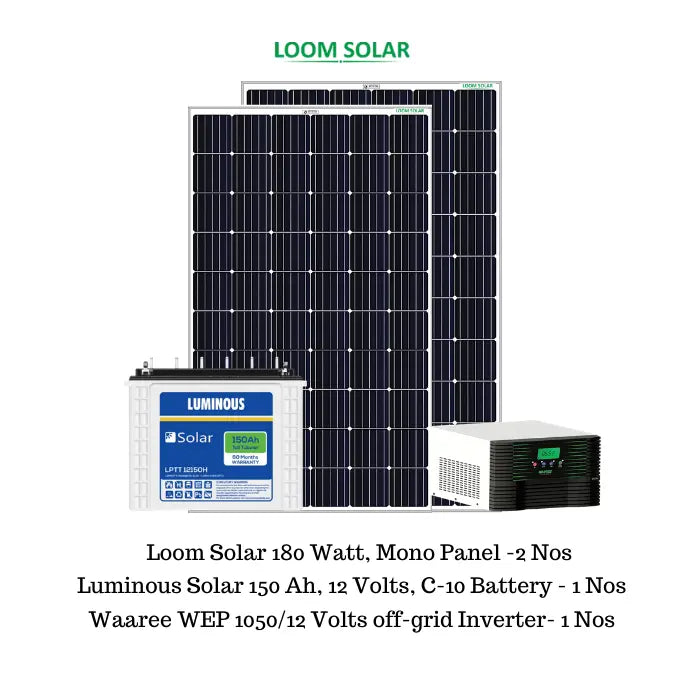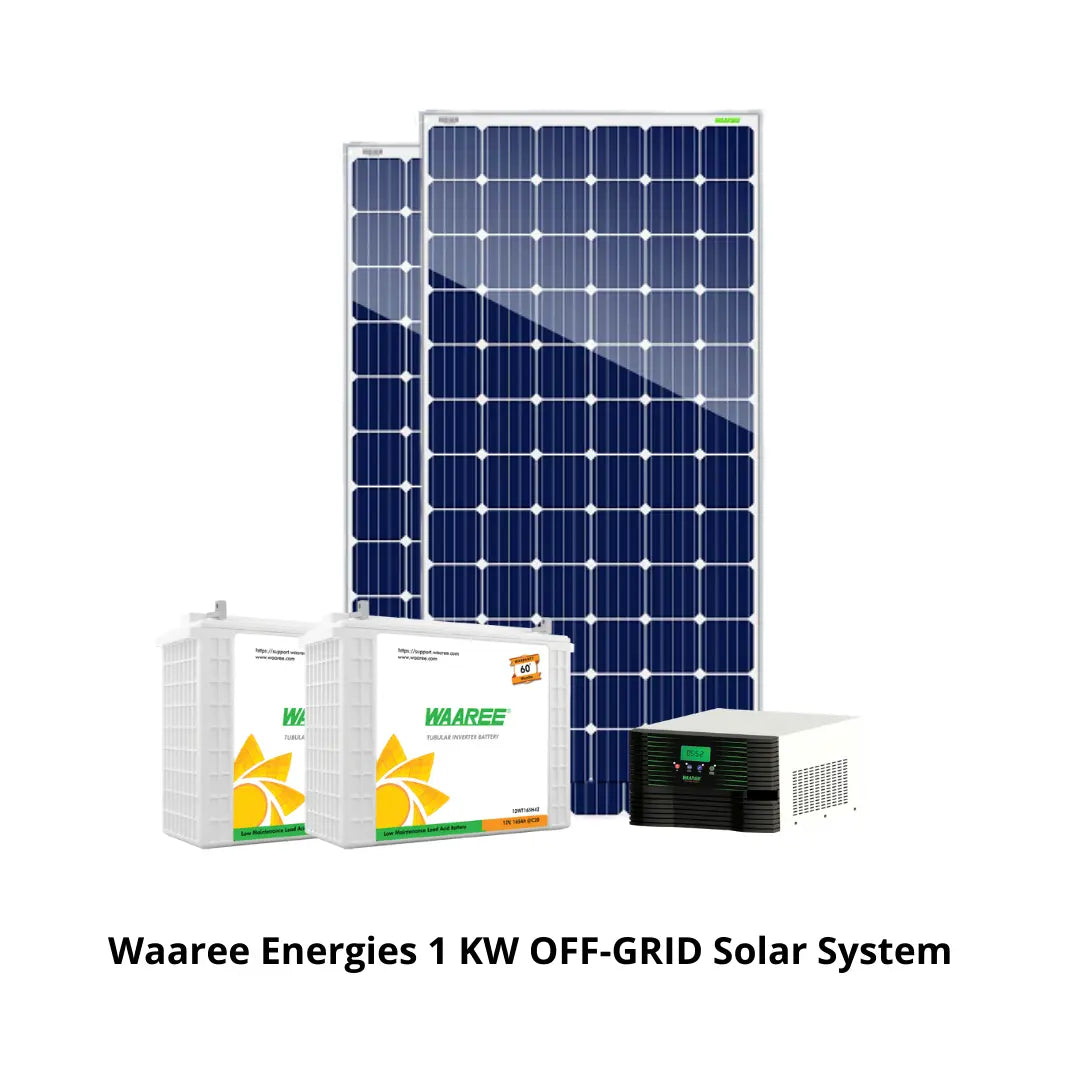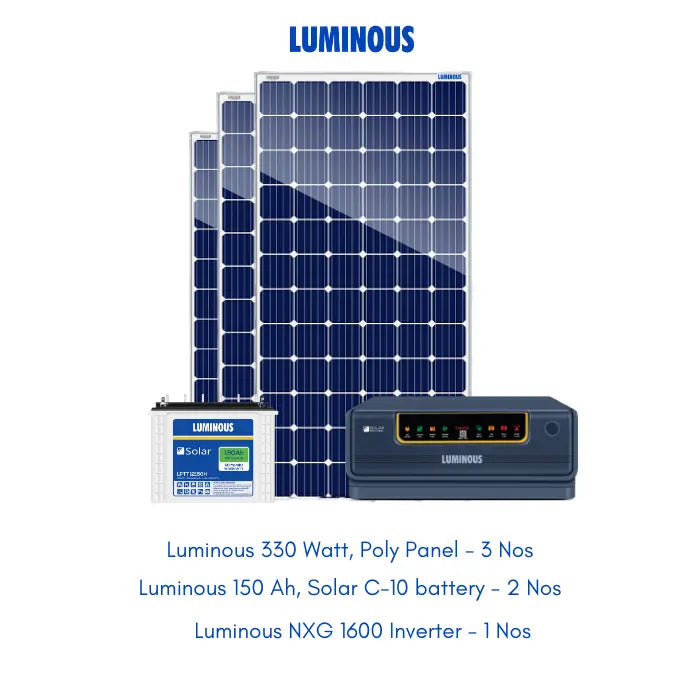Solar Rooftop System- Solar panels, inverters, and batteries are the major components of any solar rooftop system. Solar panels generate direct current (DC) electricity during the daytime and supply it to the inverter. The inverter converts DC electricity into alternating current (AC) at 50 Hz. In the case of an off-grid solar rooftop system, the excess energy is stored in batteries so that it can be used during night hours.
1-kilowatt solar rooftop system- 1-kilowatt solar rooftop system consists of solar panels of a combined capacity of approximately 1 kilowatt, solar inverter, and batteries. Some solar manufactures are selling 1-kilowatt solar rooftop systems as per the inverter capacity while others are according to the total capacity of solar panels.
1-kilowatt solar rooftop system for home- 1 Kilowatt solar rooftop system generates approximately 120-150 units/month. Electricity generation depends upon many factors such as panel technology, availability of sunlight, shadow, PID, etc., Generally Bi-facial solar panels give approximately 20-30% more efficiency as compared to polycrystalline solar panels. Also, they require less space as compared to poly-crystalline solar panels.
In the market, many types of inverters are also available & each has different characteristics. Hence, one must calculate the connected load in his house/residence before finalizing the solar rooftop system. You can refer to our load calculation guide to understand the connected load in your house, shop.
Load Calculation Guide-
| Load Particular | Load (Watts) | Load (in kW) | Load Type |
| Tube Light | 40 | 0.04 | Resistive |
| LED TV 42" (with Set-Top Box) | 120 | 0.12 | Resistive |
| LED Light (as per actual) | 10-40 | 0.01-0.04 | Resistive |
| 6 Amp, 3-Pin Socket | 60 | 0.06 | Resistive |
| 16 Amp,3-Pin Socket | 1000 | 1 | Inductive |
| Air Conditioner 1.5 T, 5 Star (2020) | 1400 | 1.4 | Inductive |
| Air Conditioner 1.5 T, 4 Star (2020) | 2000 | 2.0 | Inductive |
| Air Conditioner 2 T, 4 Star (2020) | 3000 | 3.0 | Inductive |
| Water Electric Geyser (25 Ltr) | 3000 | 3.0 | Inductive |
| Water Electric Geyser (20 Ltr) | 2000 | 2 | Inductive |
| Refrigerator (up to 165 Ltr) | 600 | 0.6 | Inductive |
| Refrigerator (350>165 Ltr) | 1000 | 1.0 | Inductive |
Note- Inductive load requires heavy current during starting and hence inverter capacity shall be 2.0-3 times more to meet the heavy current demand during starting.
Inductive, resistive load calculation, and inverter capacity- There are basically three types of electrical load based upon the characteristics and those are- (1) Capacitive (2) Resistive (3) Inductive. Capacitive load is hardly used for domestic/residential purposes moreover even if they do they don't affect the inverter performance since PF (power factor) offered by them is excellent and hence we have considered an only resistive and inductive load.
A resistive load is the one that requires a little more current during startup and settles down immediately. They hardly affect the performance of the system. However during starting they may take current equal to 1.2-3 times the rated capacity of the appliance and hence load on the inverter increases as soon as the load starts.
An inductive load may take starting current up to 4-6 times the rated capacity of the appliance. During starting of the air conditioner, the electric water heater (Geyser) takes a huge current and that's why we observe fluctuation in voltage at the start of those appliances.
Hence, the capacity of the inverter shall be decided based upon the load calculation, type of load.




